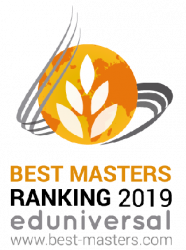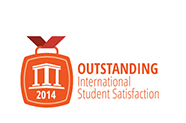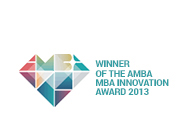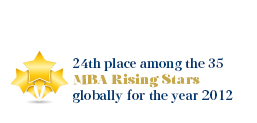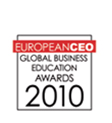This project presents the Layout Rearrangement of a Model Distribution Center of Cement in Thessaloniki for Heracles General Cement Co. The objective of the study is to rearrange the Distribution Center, in order to increase the warehousing area, to reduce the probability of accidents due to the crossing of various types of vehicles and finally to improve the customer service level. The project methodology was based on two theoretical frameworks of warehouse design. ABC classification, Cube per Order Index and material, arrival, and shipping note profiling, were used for the analysis and presentation of the current status. The processing of the results of the previous analysis led to the design of a proposed and two alternative drawings, based on basic rules of warehouse designing that can be found in the bibliography. Measurements were made, based on the drawings and the use of a simulation program, in order to evaluate the proposals. An increase in the warehousing area, an important improvement of the safety level and an improvement of the total service time of the customers were achieved in all of the drawings. Finally, the new drawings were compared to the drawing of the current situation, in order to determine the changes that will be required for their application.
Industry
Locating fixed facilities throughout a logistics network is an important and strategic decision. This project analyses the relocation of the distribution centers of a major Greek cement company. The main objective were to optimize the location of the distribution centers in mainland Greece, taking under consideration factors like the location of the points of demand, the location of the production units, the transportation infrastructure available and the accessibility at each potential location. A new location strategy that efficiently meet the demand expressed by all clients, minimize the cost of distribution and minimize the cost of cement supply to distribution centers is proposed.
ALUMIL is an aluminium extrusion and system maker which strongly relies on innovation. The objective of the project was to conduct an assessment of the innovation readiness in the organization, and analyse the areas that can be improved. Innovation can be considered as the central node of businesses, especially the ones relying of engineering products and services. It is the way the company can be differentiated and sense the business evolution. It is however wrong to find innovation only in product design and inventions. Those are the visible parts of the iceberg. Behind, it is an entire process, requiring the participation of all players in the organization, as well as external stakeholders.
An analytical framework was developed and tested, enabling identification of innovation enablers. A questionnaire on the state of the enablers in ALUMIL was administrated to the personnel and the results were translated into action plans for improved innovation performance.
Pitsos Green investigates how the Pitsos brand could get a young and modern image, targeting a 25-35 year old age segment, mainly through positioning it as the leading green MDA brand in Greece. The research was based on gathering external and internal data and qualitative research. We conducted focus groups, did a benchmarking study of competitors and potential partners, did a best practices research, made an internal audit of Pitsos’ green practices and studied the company in the light of existing academic research and a green marketing framework from bibliography. This has resulted in a SWOT analysis and a set of proposals concerning Pitsos’ green strategy, market actions and defense against greenwashing. From the market benchmark of green best practices, we conclude that the competition is closer than it might seem. Although none of the direct competitors of Pitsos have done green marketing actions in Greece, they have done so internationally and their products are nearly as green in practice. We also identified several options to partner with retailers as well as other organizations in educating consumers and promoting green awareness. In our opinion, although BSH and Pitsos are at the top of environmental friendliness in reality, the small margin relative to the competition in eco-terms, the position of the brand relative to others in the BSH group (and the competition) and the general lack of differentiation in the industry are not conducive to position Pitsos as the “most green” brand, even in Greece. We propose instead of that Pitsos plays to its (existing) strength and is positioned as a green value for money brand that sets the standard for its product category, thereby making optimal use of the opportunities provided by the green wave and the economic downturn in the country. In the report, we expand this concept with a host of specific market action proposals.
Finally, we believe that in order to create a young and modern brand image, being green alone is not sufficient. We also propose several non-green ideas to fix the communication gap with the young target group and reposition the brand, most notably playing the card of one of Pitsos’ true unique selling propositions: its image as a local Greek brand.
The project aimed at analyzing how CSR can be exploited within in BSH Greece, in order to enable the company to pursue the EFQM model and gain measurable benefits. To this end a thorough research in academic papers, articles and reports was conducted in order to gain a better understanding of CSR, find out the areas where CSR can be applied, define the costs and benefits that its implementation denotes and identify the relevant governmental policies. In order to diagnose the current state of play inside BSH-GR a comparison among BSH-GR, BSH Global and the best practices around the world, was drawn. Also, a market research has been conducted. The team combined the different findings into a CSR framework for the integration of CSR into business. Acknowledging the need of quantifying the degree of CSR within the company, performance indicators and measurement procedures were proposed.
This study examined policies that can improve the performance of BSH’s warehouse facility in Aspropirgos. The project focused on processes and resources with high utilization rates. The methodological framework selected included a mapping of different warehouse processes with the use of flowcharts, their statistical analysis, the development of scenarios as alternative approaches towards the scheduling of activities and the management of required resources, as well as the simulation of these scenarios with the use of the Extend software. The evaluation of different approaches was based upon specific performance metrics, strategically important for the company. The outcomes of the analysis were examined with regard to their sensitivity to changes of model parameters and constitute the basis for the submission of specific proposals. These proposals take into consideration the operational environment, as well as the broader company strategy concerning transportation, warehousing and the whole logistics circuit.
A methodology for the optimum layout of the new distribution warehouse of BSH Home Appliances is developed, presented and implemented. Initially, the processes followed in the warehouse are recorded and analyzed. Alternative designs of the warehouse facilities are presented and evaluated and two alternative layouts are developed implementing the “ABC analysis” method and the “Cube per Order Index” rule, based on the optimum design selected. Furthermore, a simulation model is developed in order to draw conclusions concerning the human resources requirements in the warehouse and the sufficiency of the available resources. The optimum level of human resources is approached under two different scenarios with respect to the level of daily demand. Finally, suggestions regarding the efficient utilization of the available resources and the improvement of the warehouse operational planning are made.
The purpose of the study was to present guidelines for the effective organization and management of a department of Human Resource Management and more specifically the processes and activities of recruitment, selection, training and evaluation. The study comprised an in-depth analysis of the existing procedures and functions including the unique characteristics of the organization so as to adapt the propositions to the company’s needs. A benchmarking study of best practices was conducted as well as a climate survey and job analysis. Recommendations were developed for the HR department as a key contributor to the development of Cana S.A.
The Oil & Gas Industry is a complex industry, where both services and products are being traded and global processes are taking place along each division of operations (upstream, midstream, downstream). More specifically, the Retail Fuel Market in Greece may be regarded as a perfectly competitive market, since there are no participants significant enough to concentrate the market power and set the prices of a – generally homogeneous – commodity such as fuel. Another aspect of the Fuel Market is the fact that most consumers are fairly mobile at the time of purchase.
The aforementioned attributes of the Retail Fuel Industry, along with the seemingly difficulty to differentiate the product, create a significant pressure to the companies operating in the Oil & Gas Industry to sell at lower mark-up and gain more volume. Therefore, the retailers are in a constant quest of pricing strategies as well as oligopolistic models to implement in order to maximize their profits, whilst utilizing the consumers’ surplus.
Additionally, the Oil & Gas companies, in alliance with their marketing concept, will try to differentiate their products by highlighting performance characteristics and additives, even though it does not amount to a significant result; the products and services are very similar amongst the companies of the industry. With such a large range of products and customers, it is evident that there is no single marketing strategy used by oil companies. However, it is clear that the marketing concept that needs to be developed by an oil company should be integrated around a fundamental and clear “Brand Portfolio Strategy”.
The mission of this project is to identify, analyze and finally compute the costs that are associated with the inter-firm’s supply chain activities and more specifically with the costs occurring in the purchasing, processing, warehousing and sales of company’s products for the time period between 1/1/2006 and 30/6/2006. With the execution of this project the company will be aware of the cost that each activity has in order to transform a raw material into the final product, the single cost per product of purchasing, processing, storing and selling and the total inter-firm supply chain cost for each one of the final products. The methodology that has been applied for the computation of firm’s supply chain is Activity Based Costing at the first level, in order to compute the costs of processing activities, and then Unit-Based Cost Metrics in order to allocate these costs to the different products.
The Distribution Division of the Hellenic Public Power Corporation (PPC), with the help of the Distribution Planning and Management Department, has created a new management performance system based on in-house benchmarking and the Balanced Scorecard methodology in order to evaluate the performance of its subunits and also motivate managers and other employees at all levels to strive to achieve the Company’s strategic goals. The first part of the project consisted of evaluating the existing performance measurement system used by PPC with regard to measures and weights used, and critical experiences from its current application. In addition, through in-depth analysis and research from all available sources, the second part focused on identifying optimal patterns for connecting the performance measurement system’s outcomes with the performance reward payments, as well as the optimum way of bonus allocation per Unit and hierarchical level.
This project, implemented in the Coolers Division of Technical Department of Delta Dairy, aims at improving the maintenance process effectiveness for improved competitive advantage. Following the company’s strategy towards outsourcing of non-core business operations it researches the peak capacity, in terms of productivity and throughput, in order to compare it with outsourcing offers. The team selected and implemented a set of methods for improving the output of the workshop. Moreover, the need for application of HR methods arose. The implementation of the suggestions made show indicatively a significant improvement of productivity compared to the previous state
Natural gas will probably become in the next decades the most important energy fuel in the world. This evolution has emerged the issue of security of its supply in the east Mediterranean area affecting Greece and the Greek Natural Gas Public Corporation DEPA. The fact that most production places in the world are located far away from our region, in areas with political and economical instability, creates uncertainty for the security of supply. Greece is going to play in the near future a very important role as south-eastern gas gate and hub of the European Union offering real solutions for diversity of supply and satisfying its own growing domestic demand. This diversity is served by new infrastructure projects like pipelines and LNG terminal upgrades. A scenario planning methodology has been used in order to study security of supply creating a unique method that fits in the nature of the subject. Factors that affect security of supply in east Mediterranean area have been identified and two basic scenarios for the future state in our region were developed. Recommendations are presented for preventive measures and directions that would secure supply even if the future evolves closer to the undesirable scenario.
The project was carried out in co-operation with ELVAL, one of the biggest aluminum rolling/sheeting companies worldwide. The work was part of a broader effort to increase production capacity and implementing a strategic shift towards high added value products. The foil department and its representative products were chosen for the study. The objective was to arrive at an optimum product mix on the basis of profit margin maximization and a shift towards high added value products over a 5 year period. Realistic operations and market data were used. The project methodology consisted of formulating several production scenarios for a 5 years period, and consecutively, analyzing them as a Linear Programming problem, using the Solver add-in of Excel. The team reached the general recommendation to shift the production towards a particular product category, and also proposed recommendations on complementary analysis methods such as Activity Based Costing and Risk Optimizer.
The objective of the present Field Study Project is the study of the merger of Eskimo S.A. by absorption of F.G. Europe S.A., which was completed in June 2003. The work comprised a conceptual overview of the merger process and a detailed description of the phases prior, during and after the merger of the two companies. An evaluation of the procedures and their outcomes followed leading to a comparison of the evolution of this change to the theoretical framework and a number of suggestions for further investigation. The scope of the FSP is, on the one hand, to outline the usual practices that Greek companies follow in cases of mergers with other firms, the difficulties they meet and the gaps in the established legal and organizational status and, on the other hand to stress the unique characteristics of this particular case study.
The Project focuses on the supply chain of the company GlaxoSmithKline and specifically on the consumer products division. It aims at recording and studying all the stages of order processing and delivery, as well as evaluating the clients perceived customer service level. It identified the high importance – low performance factors that determine the level of customer satisfaction and submit specific proposals for improvement. Moreover, given the company’s outsourcing policy, it aims at introducing a framework for evaluation and selection of a 3PL partner, as well as control his contractual duties achievement.
The general conclusion of the customer satisfaction survey was that GSK clients are satisfied by the order processing procedure overall. The discrepancy between company’s and best performer’s evaluation is low. Nevertheless, customers appear to demand improvements in three specific elements, for which specific suggestions have been proposed. For the continuous monitoring of the supply chain effectiveness, a performance indicators framework, combined by a multi-criteria analysis method, is proposed.
Italcementi Group is one of the largest cement corporations in the world, with leadership in the Mediterranean Rim and a yearly-consolidated cement capacity of over 70 million tons of cement. “Halyps Cement” seeks to diversify its production portfolio by investing in dry mortar products, adhesives, grouts, as well as in special cement products, based on the Group’s current experience. This project consists of a Business Plan for a greenfield investment for the production and distribution of dry mortar products, targeting mainly the domestic market in Greece. The establishment of a new production center will eliminate all the importation & logistics costs occurring up to now, whilst at the same time will facilitate larger volume productions to satisfy the current demand by targeting a segmented market. Nevertheless, it will result at lower product costs since the company will be able to set up its own operational expenses and eliminate all the importation costs. This will make the company more competitive in the local market as it will result to higher profit margins. In the model have been included revenues from current and potential customers, while the most important costs involve property, land and equipment installations, including all initial operating costs. The investment has been ranked using the Net Present Value, Internal Rate of Return and Pay-back Period methods. Risk Analysis was based on Break-Even, Sensitivity Analysis and Scenario Analysis using as critical variables the product prices, sales volumes and variable costs.
Starting from the general (corporate) strategy description, the corporate objectives are identified, followed by the examination of the business objectives of each country of strategic interest abroad. Those objectives and linkages between them are visualized using strategy maps. Describing the strategy should enhance alignment of company objectives, giving the base for its performance measurement. This study proposes the base for the development of a consistent performance measurement system of ELPE’s international activities. The Balanced Scorecard (BSC) approach is used for identification, elaboration and linking the performance measures in the four perspectives proposed by this methodology: financial, customer, internal and learning and growth perspective. Prototypes of the BSCs for seven companies of ELPE’s interest are developed in order to identify the criteria and tools for measuring their objectives. This process should lead to the translation of the company’s strategy into operational terms, providing guidelines how actually to manage the strategy. The framework for identifying the clear and unambiguous action plan is introduced, in the form of the adaptable generic table of international division’s objectives, measures and initiatives.
The objective of this project was to quantify and hedge against the risks that specific subsidiary fuel retailers and wholesalers of Hellenic Petroleum Group face regarding two of its products, namely the unleaded gasoline and the automotive diesel. First, factors that have a deep impact on the volatility of the oil prices worldwide, as well as in the specific markets, are described. Then magnitude of the potential losses that the company will incur under different confidence levels and different horizons are projected. Various methods of the value-at-risk technique were utilized and backtested to estimate the price risk that the parent company faces when supplying its subsidiaries. The information gained from the aforementioned analysis necessitates that hedging instruments (i.e. futures) from the most important commodity exchanges in the world be used. The effectiveness of the various futures considered was tested using the minimum variance criterion. The implications of the results are crucial for the company’s strategy because they help to minimize the exposure in the fluctuation of unleaded gasoline and automotive diesel prices. Finally, the theoretical impact of this hedging strategy on the whole company is discussed.
Based on emerging practice in procurement management, this project aimed at developing a set of proposals for enhancing the role of the procurement function in the profitability of an organization. The team proposed a strategic methodology that should be followed by the group of companies in order to turn procurement into a strategic competitive advantage. At the tactical level the current processes were identified and analyzed, followed by suggestions for productivity and efficiency improvements. Finally, proposals for how the purchasing cost of the group can be reduced were put forth.
This Masters’ Thesis was submitted in Partial Fulfilment of the Requirements for the Degree of Master of Business Administration of Athens’ University of Economics and Business and was incited by Lafarge/Heracles GC. This Field Study Project includes the research, as well as the study of all the alternative uses of limestone in Greece. Limestone, as a raw material of cement, beyond its use as a building material, can also be used in agriculture, animal feed, glass and in many other areas, bringing additional revenue to businesses that utilize these alternative uses. During this FSP, the following areas were extensively examined: all the alternative implementations of limestone in Greece and abroad, the applicability of uses which have not yet started in Greece, and the domestic market of the existing uses. Certain factors have been taken into consideration, in order to complete this FSP, such as the availability and variations in material composition of limestone for being suitable for the various applications, the competition, the supply and demand and finally, the specific conditions prevailing in each use-market to consider. Following the analysis of alternative applications, suggestions for the use of limestone by Lafarge/Heracles GC are analyzed. Finally, the conclusions and recommendations for future actions by Lafarge/Heracles GC in order to exploit the limestone to an even greater extent are elaborated.
The main purpose of this paper is to investigate how an electronic platform that will facilitate the Idea Generation/Management and Project Management processes can be developed for the Greek subsidiary of Lafarge within the framework of the EXTRA MILE project. The EXTRA MILE project is in place in order to facilitate Innovation, Intrapreneurship and Knowledge Management with the objective to enhance the company’s performance within the current declining industry and economy. It also aims at examining issues of Resistance to Change and Internal Marketing for the new e-tool.
The project started with literature review of related fields and went on with a requirement analysis for the e-tool through extensive contact with Heracles-Lafarge’s project team, in-depth interviews with employees and observation within the company’s working environment. Finally the e-tool was developed and tested through several testing and feedback sessions.
The main findings have to do with the end-users needs for the tool in question along with the development of the e-tool in terms of interface, functionality and process flow.
This paper is of use to the Greek subsidiary of Lafarge, since the e-tool has been developed matching the exact company’s needs. Given the fact that EXTRA MILE is a global Lafarge project, with certain modifications, it could be of use to other Lafarge subsidiaries as well.
The project aimed at investigating the market for asphalt mixture producers focusing on the major construction companies to reach conclusions for the asphalt market sector. Based on a questionnaire and secondary data sources strategic recommendations regarding the development of this market were made, including discussion of strategic collaborations.
Modern economies have escalating needs for developing, repairing and modernizing their infrastructure. In this context, the BOT (Build-Operate-Transfer) technique is gaining increased importance. This project consisted of an overview of the knowledge and practices concerning the methodology of BOT projects. Based on a case study of a BOT project for Mochlos Construction Company, which will include a Hotel, a Conference Centre, an Exhibition Centre, Commercial Shops, Parking and Cinemas, a methodology for evaluating BOT project was developed. The methodology includes an analysis of the economic and construction environment, traditional measures of investment evaluation (Payback Period, NPV, Internal Rate of Return) and risk analysis (Scenario and Sensitivity Analysis, Monte Carlo Simulation, Project’s Beta, Cost of Capital, Real Options).
The aim of this field study project was to suggest a specific plan as a reply to Novartis’s ambition to establish a networking scheme of both an online and offline mode, for the interaction among Health Care Professionals and public awareness with regards to the tackling of Chronic Obstructive Pulmonary Disease. The company’s utter aim is to popularize the use its innovative product that tackles COPD. By investigating the opinions of professionals who deal with COPD and the existing internet area on the matter, the team suggested the layout and content on a website and the additional offline support of this. Through the usage of this scheme Novartis can enhance the interaction and sharing of information within its HCPs network, as well as promote the circulation of its product.
The Personal Health Program is an innovative marketing pilot project which is the result of the joint effort of Novartis Hellas and Athens University of Economics & Business. The project was designed to satisfy, through a unique patient-centric approach, the needs of women aged 45-65 and provide them with their personal health program. The project comprised the following two sets of actions: 1. Provide better healthcare for the diabetic women in order to help them improve their quality of life. 2. Raise awareness for the most common diseases affecting women within the aforementioned age range.
Over the last few years, Algeria has become one of the most prominent and fast growing markets for Novo Nordisk. This favorable situation has led to a necessary expansion and many other changes within the Novo Nordisk affiliate in Algeria. It is expected that the developments in the last years have caused changes in the way the company is perceived by its local external stakeholders. The aim of this project was to perform an extensive study of both patients and health care providers in order to understand their needs and the perception of the company brand, so as to develop suggestions that will support the market expansion of NovonordisK in the specific country.
The modern industrial units are confronted with the imperative for effective and efficient operation. In the highly competitive industry sector of metallurgy, costs and delivery times are factors of critical importance for the survival of a corporation. In this context, the study analyses the procedure followed for the simulation of the production process in the rolling mills department of SOFIAMED, a Halcor Group subsidiary based in Bulgaria. The need for the study arose from the fact that the plant is operating under its capacity level, performing pilot production during this year. The project analyzes possible impediments and deficiencies of the current system while executing the production program of the next five years. Moreover, recommendations are made for a more effective operation of the production system for the efficient management of the problems encountered.
The simulation model was built with the use of the SIMUL8 software package which provides many capabilities for simulating various production processes. The results of the simulation offer many interesting insights regarding the feasibility of the production scenarios and can be used as guidelines for the assumption of initiatives and corrective actions on behalf of the management.
Vivechrom is currently conducting it’s logistics operations using its own fleet and full-time employees as drivers and assistants. In the context of its supply chain re-engineering, Vivechrom requested a feasibility study on the venture of outsourcing it’s logistics operations, along with the conditions under which such a venture would benefit it the most. The methodology that was developed to study the case is applicable also to a series of similar cases. Furthermore, the study describes in detail the alternative scenarios which can lead to an effective change implementation. The evaluation of the alternative scenarios is based on a Scoring Model, which was developed specifically for the case but can also be applied, with only minor modifications, to a wide range of cases.









